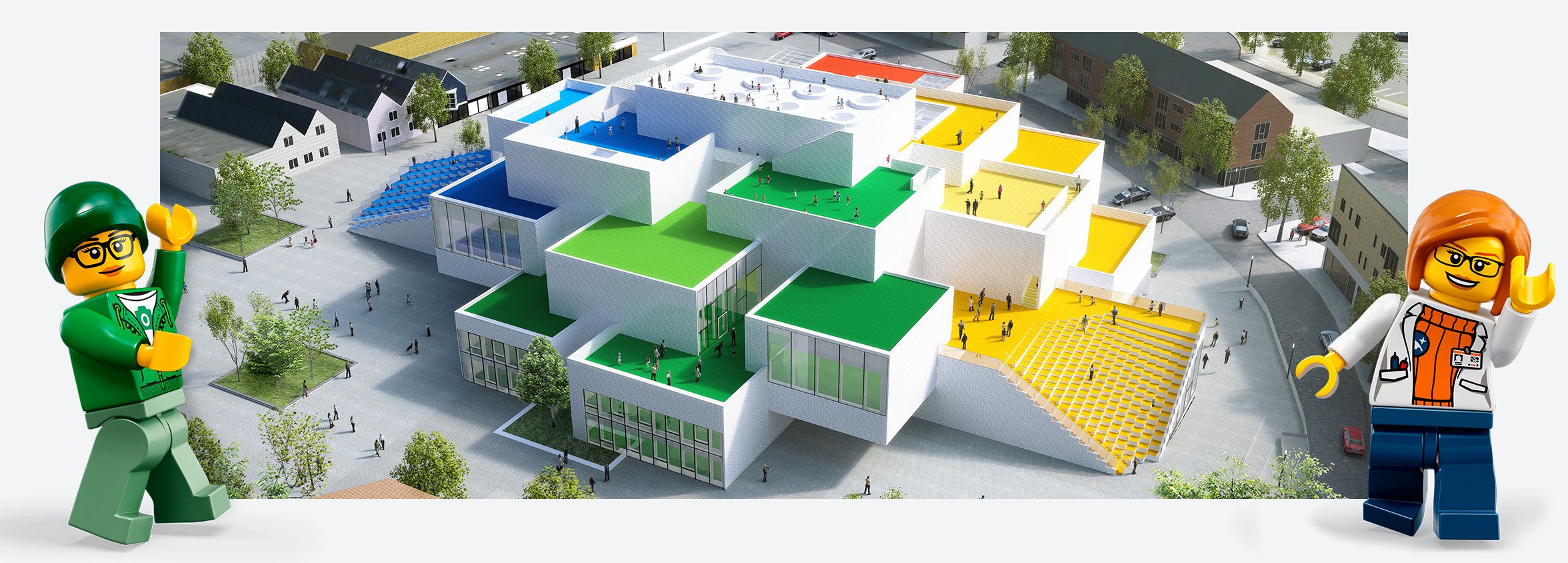
LEGO House. Image: LEGO
At their most basic level, buildings — our homes, offices, shops, etc. — protect us from the elements. They give us ways to carry out our activities in environments that keep our bodies safe, warm, and dry. They make it possible for us to convene as groups to get things done while keeping us and our goods safe.
However, buildings do more than merely provide for these basic needs. They’re also physical manifestations of the political, social, and cultural environments that produced them. They tell stories about who we are as a people and inform our sense of group identity — whether the group is a nation or a company.
This year we’ve seen the opening of two major architectural projects that have been explicitly created to embody the identity of the organizations that produced them: Apple Park and LEGO House. Apple Park is a manifestation of Apple’s values in the form of a building complex: it uses innovative construction techniques and materials in service of sleek, practical, elegant tools. It is an act of design and technical bravado, without gaudiness — just like the products Apple fans love.
LEGO House also manifests the values of the company that created it in the form of a building:
Have you ever wondered what it would be like to be inside a real LEGO® House? That’s why we built this world of creative experiences. Discover the magic behind the brand, and the endless possibilities for play and learning with the inspiring LEGO brick.
LEGO goes on to explain how the environment is structured:
When children play, they are having fun, experimenting, tinkering, messing around and making mistakes. In other words, they are learning.
The process of playing and learning while having fun is a holistic balance of five overlapping competences.
In LEGO® House, these core competences are laid out as physical spaces.
In Red Zone, we have made plenty of room for creativity. In Blue Zone, we stimulate your cognitive abilities. In Yellow Zone, emotions will take centre stage, and Green Zone is all about social play. The outdoor areas cater for physical play, spatial awareness - and letting off steam!
All activities in the LEGO House Experience Zones embody the LEGO Learning Through Play philosophy.
In other words, here people can experience LEGO’s brand values by inhabiting a place structured explicitly to embody them. While Apple Park is designed primarily as an office building with a symbolic function, LEGO House was designed to be a destination for LEGO fans visiting the company’s birthplace and headquarters (Billund, Denmark.) It allows them to converge in a place where they can experience the brand’s values in physical space, therefore reinforcing their identity as “LEGO people.”
Like buildings, information environments also have symbolic functions. Your bank’s website is not just a means for you to carry out financial transactions; it also embodies the bank’s brand values and (in ideal cases) encourages you to feel like part of the tribe. A well-designed information environment can inform and foster group identity. Have you thought about the ways yours does it? Does the environment feel ordered? Is it aligned with the organization’s values? Does it feel secure? Is it clean? Friendly? Sober? How do people think differently about this place than others like it? (Do they?) Addressing these issues explicitly during the design process helps us create environments people not only use, but can also relate to and embrace as part of their identity.